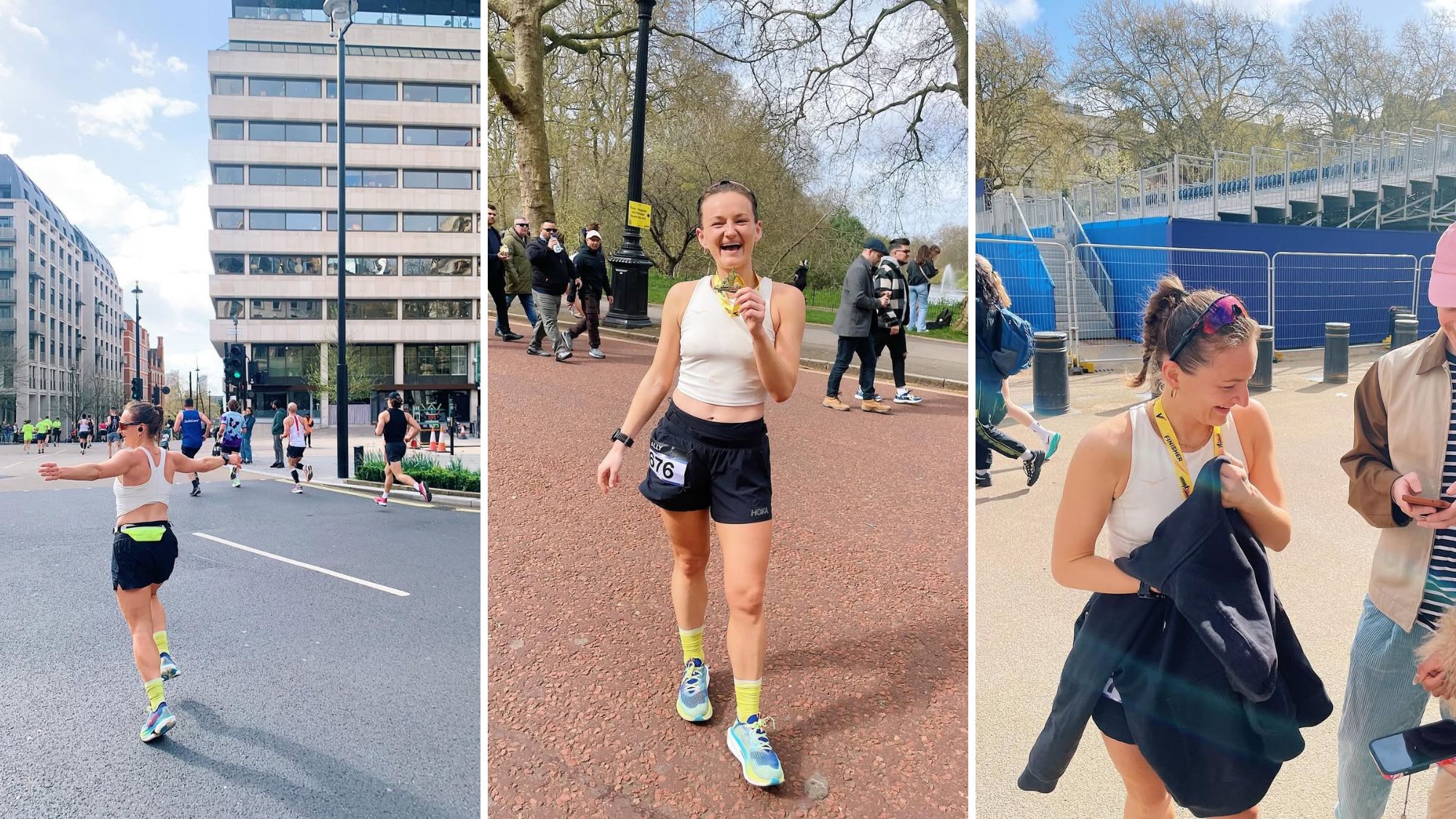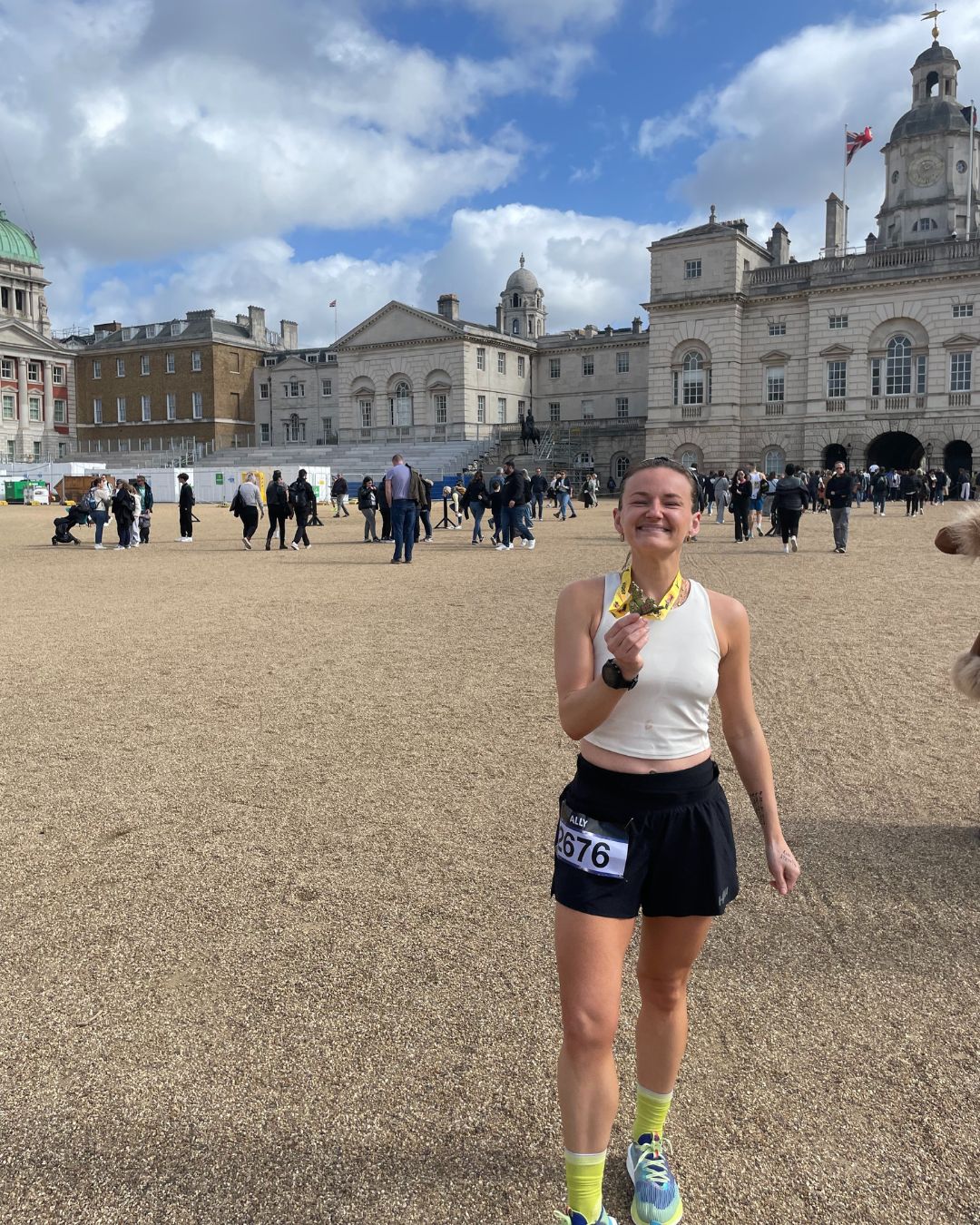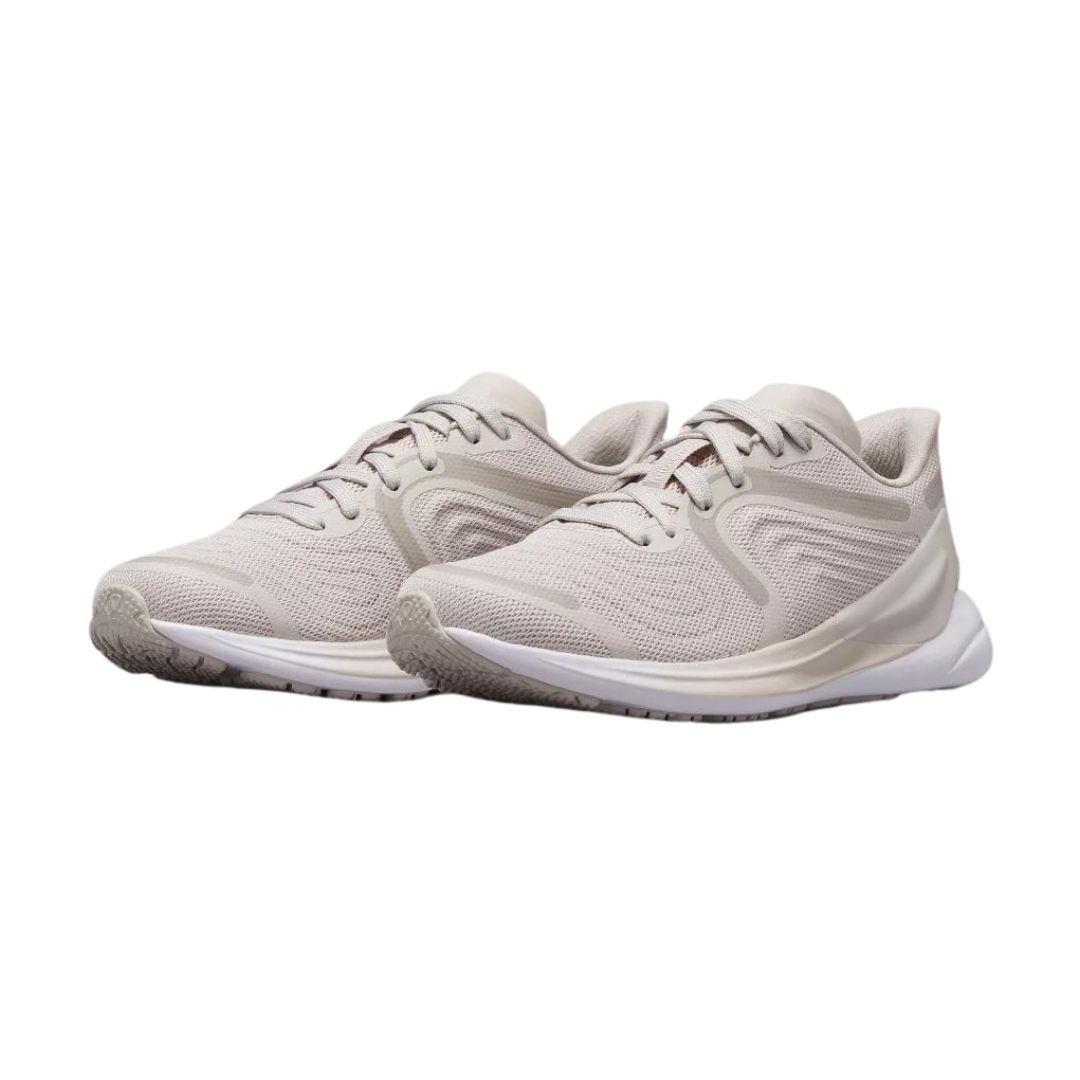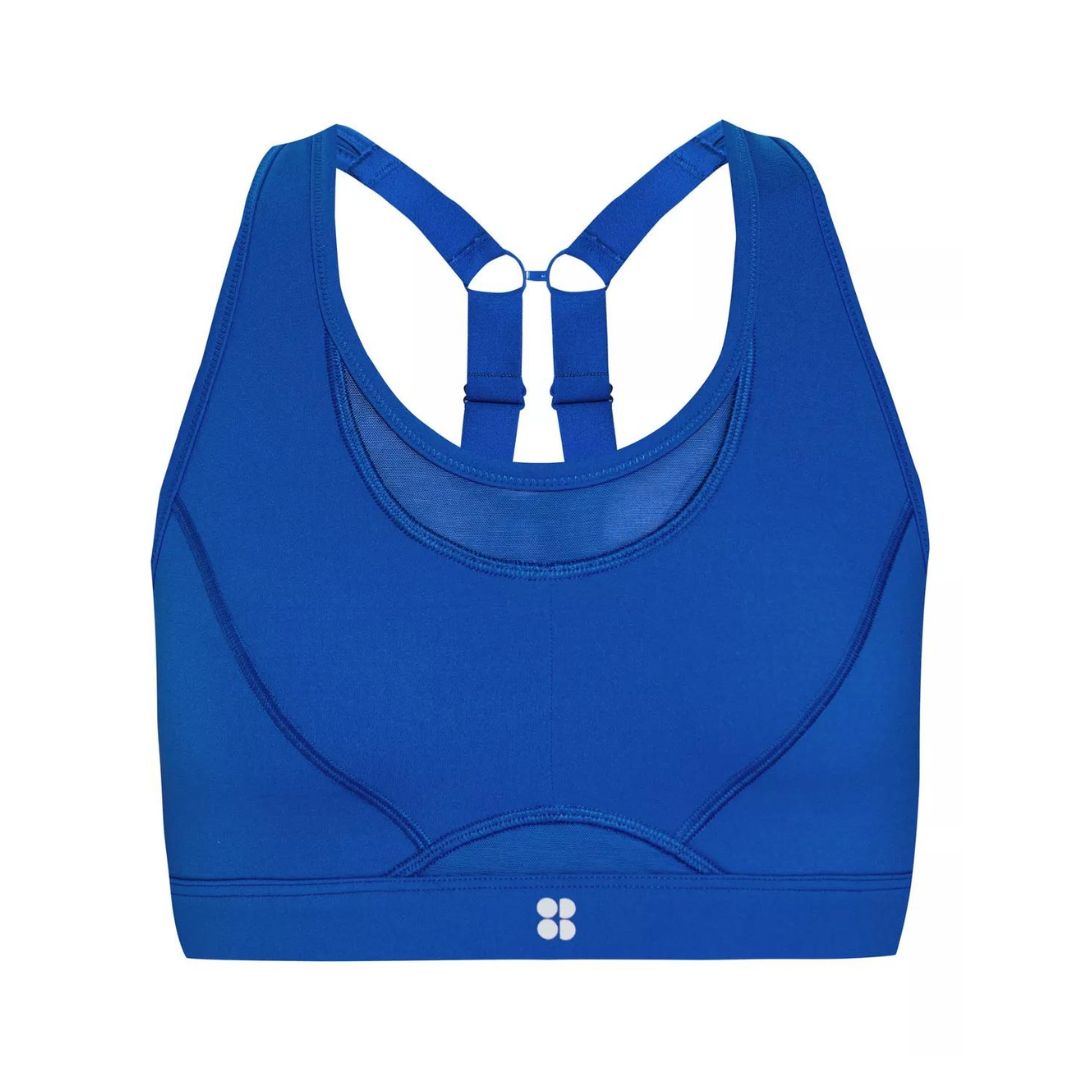
Running is having a bit of a moment, isn't it? In the spotlight as an affordable, accessible way to boost your fitness, Google Search around the topic has been steadily rising since 2020, with run clubs popping up left, right and centre around the globe.
Spoiler alert: while I now run most days, I used to really, really dislike cardio. I found running boring, difficult and unrewarding - that was, until one particular Runner's World article about the many benefits of running caught my eye and I decided to sign up for my first 5km race. From better cardio fitness, to improved muscle tone, to boosted mental health, running is a real all-rounder, with one 2020 study concluding that running improves both mood and mental health and a further Psychonomic Bulletin and Review paper credited the "insurmountable" proof that regular exercise curbs age-related cognitive decline.
For me, that was just the beginning. I'd officially caught the running bug and spent months building up my fitness bit by bit, all the while learning a newfound respect for my body and what it could do if I put in the training.
Fast forward nine years, and it's fair to say running is an enormous part of my life. I've run nine marathons, one ultramarathon and countless halves, three of those which I've banked under 1 hour and 30 minutes.
For context, when I ran my first ever half marathon back in 2015 I crossed the line in just over two hours, meaning I've now chipped 32 minutes off my time. Wondering how I've done it? For transparency, it's been a journey to get my fitness to this point, but I largely credit one type of training for improving my speed. The type of training in question? Speedwork.
A type of cardio workout that'll likely push you out of zone two, it's a really simple type of run training that's often overlooked, but absolutely essential if you're looking to improve your speed or chip away at your running times. Most professional runners, including Charlotte Purdue, Dina Asher-Smith and Asha Philip, incorporate it into their weekly training, with celebrities including Meghan Markle, Jennifer Aniston and Ellie Goulding all thought to be fans, too. Below, I've asked a top run coach to break down what exactly speedwork is, plus share an overview of the main benefits and a few workouts for beginners to try for yourself if you fancy.
Don't miss our guides to how to run faster, how to run for longer, and expert-approved running tips for beginners. Keen to know how to start running? We've got a guide for that, too. Or, if you're interested in shopping tried and tested fit kit that comes Editor-approved, don't skip our guides to the best running shoes for women, best running shorts, best hydration vests and best sports caps, here.
Celebrity news, beauty, fashion advice, and fascinating features, delivered straight to your inbox!
Your guide to speedwork training, aka the simplest way to improve your running speed
What is speedwork?
According to Pete Cooper, founder of running app Coopah which is one of the official training partners of the London Landmarks Half, speedwork constitutes short, sharp bursts of sprinting during your runs. "It combines short and intense bursts of exercise, which get your heart rate up," he explains.
Imagine running at 80 to 90% max capacity, where you can't hold a conversational pace and feel like you're pushing almost as hard as you can. This is speedwork - in a nutshell, any run that's faster than your current "steady" pace.
Don't worry, though - Cooper explains that there are plenty of different types of speedwork to suit your current fitness level and end goal. You'll always get time to recover post-sprint, too, with the broad aim of repeating several sprints throughout the course of a session to improve both your anaerobic and aerobic fitness.

Ally running the London Landmarks half marathon 2024
What are the different types of interval training?
In the running world, "speedwork" is acknowledged as something of a catch-all term as it encompasses many different types of workouts. These include:
- Intervals - running where you mix max effort sprints with periods of jogging, then repeat.
- Tempo runs - running at a 60 to 70% effort level for your entire run.
- Progression runs - running where you start at an easy effort and get quicker.
- Fartlek runs - running where you mix moderate pace with fast pace.
- Strides - short bursts of 15 to 30 seconds where you run at max pace.
"In running, there’s a range of different types of speedwork," Cooper confirms. The most important thing is choosing a type of speedwork that you enjoy, but that also works with your current fitness level and is suitable for whatever goal you're currently working towards.
The aim of speedwork is simple: to push you to your limit and ultimately make you not only fitter, but faster, too. As you're pushing yourself weekly to run harder sessions, your body will become more capable of managing this effort over longer distances, in turn chipping away at your personal bests and overall running speed.
What are the benefits of interval training?
We've touched on it briefly above, but there are a whole load of benefits of adding speedwork into your weekly sessions. "The key benefit is getting your body used to feeling uncomfortable," explains Cooper. This then means that on race day or in your next run, when you're pushing the pace, your body is prepared to handle the challenge when it gets hard, he goes on.
Think about it - if you never push the pace during your training, you're bound to find it hard to push the pace come race day or your next run. Running fast enables you to get faster, and also helps to improve both your form and efficiency. "In run training, ideally you'll aim for easy runs, long runs, easy runs, and speedwork training, too," Cooper explains. "A good benchmark is to aim for 80% of your miles at an easy pace and then 20% of your runs at race pace or faster. This is usually achieved with speedwork like tempo runs or intervals, and is to get your body used to working at a higher heart rate, in turn building your VO2 max and making you a faster runner."
Studies, including this 2021 paper, show that speedwork can "improve endurance, sprint, repeated-sprint ability, and aerobic capacity," not to mention build muscle, improve breathing, and develop fast-twitch muscle fibres. Also interesting to note - speedwork improves your ability to supply your muscles with oxygen, essentially making your body more efficient at managing harder paces.
On a personal note, I find speedwork incredibly cathartic - I can only compare it to cold water therapy, as you're forced to focus on your breathing during both practices. While it can seem daunting to begin with, reminding yourself that you are capable of doing hard things is incredibly empowering and undoubtedly helps to build mental resilience.
Bottom line? "Speedwork is one of the best ways to get faster as a runner," Cooper confirms. "By working in short cycles, you’re getting your body used to going into the red heart rate zone and working harder than it’s used to."

Ally at the finish line of the London Landmarks half marathon
"Speedwork has changed my running forever - I can't recommend it enough."
I've been incorporating speedwork sessions into my weekly training for the last five years or so now. While I did a few sprint sessions when I trained for my first marathon back in 2017, it was only in 2020 training for a Boston Qualifying time that I really started utilising the training method as a way of improving my time.
While I totally appreciate pushing the pace can feel intimidating at first, my biggest advice would be to take it one minute at a time. Speedwork can be as simple as heading out for a ten-minute run and pushing your pace every other minute - it doesn't all need to be fancy running jargon and speedy carbon plate shoes.
Interval sessions have single-handedly helped me to chip my marathon time down from 4 hours 11 minutes to 3 hours 15 minutes, and my half marathon time down from over 2 hours to 1 hour 28 minutes. While running isn't about times - far from it - there's a real joy to be found in seeing your fitness levels improve, and also a certain amount of empowerment in proving to yourself that yes, you can.
A post shared by ALLY HEAD (@allyyhead)
A photo posted by on
3 interval sessions for beginners to try tonight
Keen to try an example of an interval training session for a beginner? You're in the right place. If you're a beginner, Cooper advises aiming to run ten one minute sprints, with a minute's jog in between each sprint.
If you'd rather follow along a workout in real time, check out the workouts below.
1. 10 minute interval workout
What? A ten minute interval session that'll help you get a grasp of what interval training feels like, whatever your fitness level. Do use the suggested times as a guidance and remember to run at whatever feels like a "push" pace for you.
Why? This is a great option if you're new to the type of workouts or only have ten minutes to spare. Plus, it promises not to be too daunting as it's not too lengthy a session.
How long? 10 minutes.
2. 20 minute interval workout
What? A 20 minute beginner interval treadmill workout with certified trainer Sam Candler. During this session, you'll be guided through series of walk, jog, and run intervals, helping you find what your own push and comfort zones are and boost your cardiovascular endurance.
Why? If you've tried interval training before and are looking for a good guided session to get you back in to it, this is a great place to start. Be guided by the qualified expert's tips and feel your body working.
How long? 20 minutes.
3. 30 minute interval workout
What? A half an hour interval treadmill workout. Do note, while this is designed for beginners, 30 minutes is a fairly long amount of time to be pushing your pace for, so we'd advise you only opt for this session if you've tried intervals before and feel comfortable working out for half an hour at a time. Similarly, all speeds and inclines are suggestions, so as always, do workout what pace works best for you.
Why? Opting for this workout means you'll be banking 30 solid minutes of run and recovery intervals, guided by a trainer, alongside a warm up and cool down.
How long? 30 minutes.
4. 35 minute interval workout
What? A tempo run from the personal trainers at IBX running that'll have you hitting a comfortably hard pace and recovering with short intervals of jogging or running.
Why? To improve your overall cardiovascular fitness and improve your running ability.
How long? 35 minutes.
5. 40 minute interval workout
What? A long 45-minute interval session, but that's broken up into running/walking intervals to make it more accessible for all. Don't be daunted by the length of time - you've got this.
Why? Banking 45 minutes of speedwork every week is almost guaranteed to improve your fitness and ability to smash personal bests.
How long? 45 minutes.
Shop MC UK's go-to running kit now:

While there are hundreds of running trainers on the market, I've always liked the lululemon designs for any type of training. They've all been designed specifically for women and took four years of research and development before their release. Buy for an all-rounder trainer that's comfortable and stable.

Ally is Marie Claire UK's Senior Health and Sustainability Editor, a well-regarded wellness expert, ten-time marathoner, and Boston Qualifying runner.
Utilising her impressive skillset and exceptional quality of writing, she pens investigative, review and first-person pieces that consistently demonstrate flair and originality.
As well as writing, Ally manages a team of freelancers, oversees all commissioning and strategy for her pillars, and spearheads the brand's annual Women in Sport covers, interviewing and shooting the likes of Mary Earps, Millie Bright, and Ilona Maher. Shortlisted for three BSMEs and winning one in 2022, Ally lives and breathes her verticals: her eye for a story and connections within the wellness sphere are unrivalled. Follow Ally on Instagram for more.






